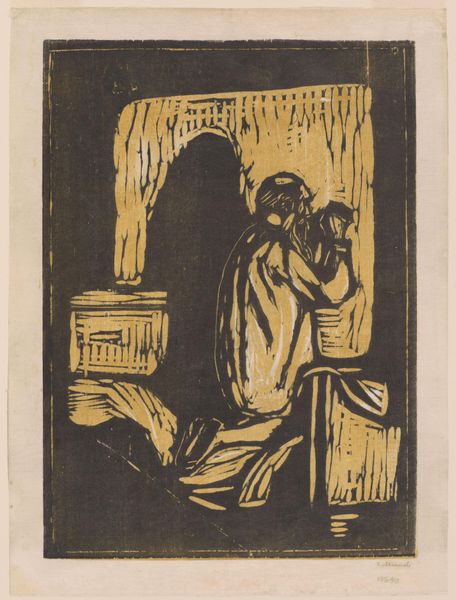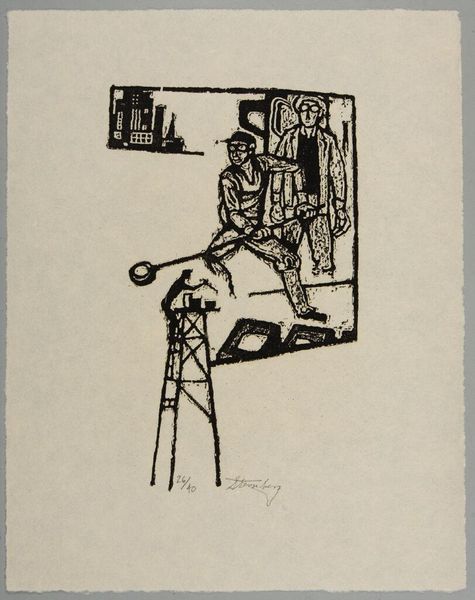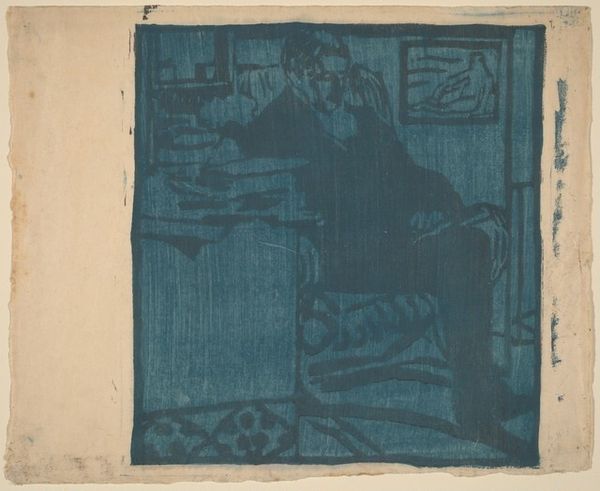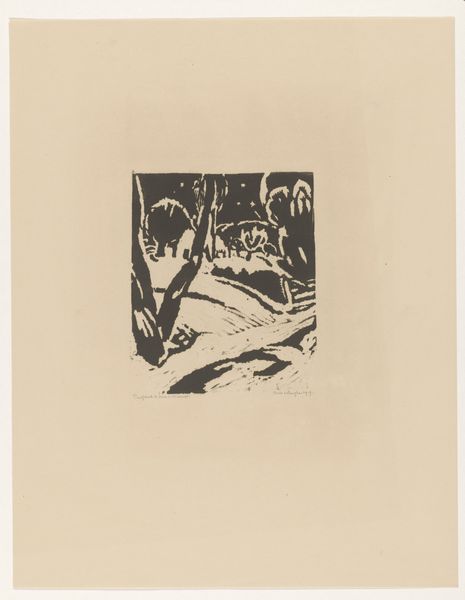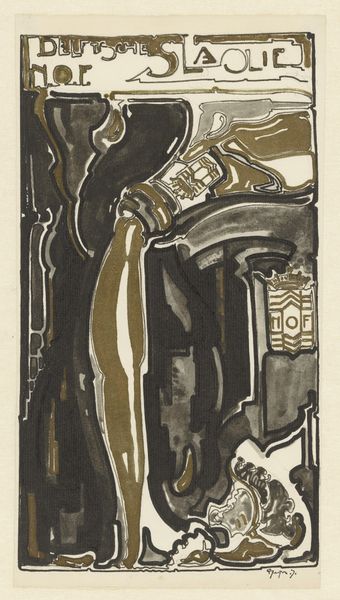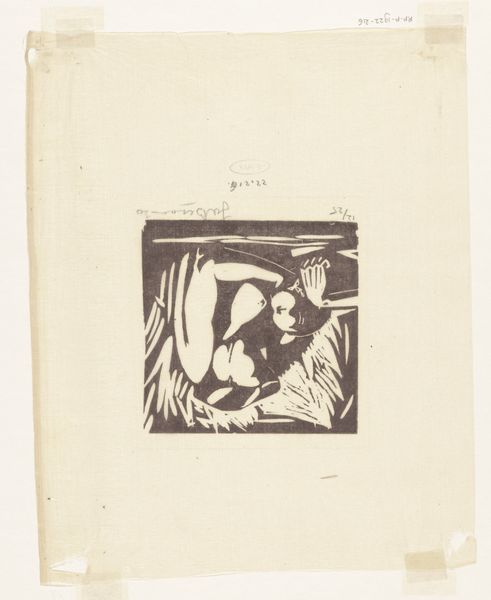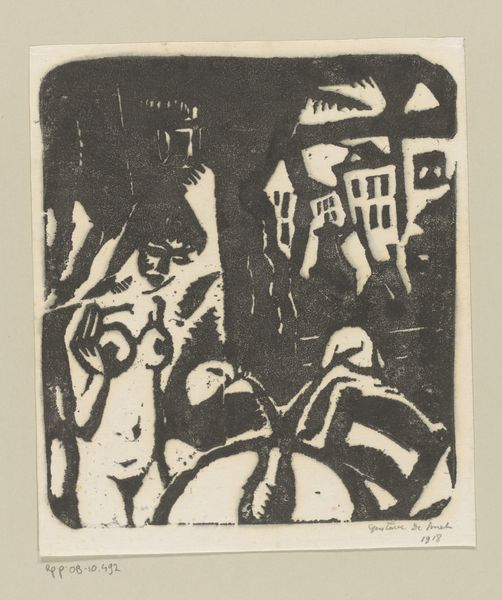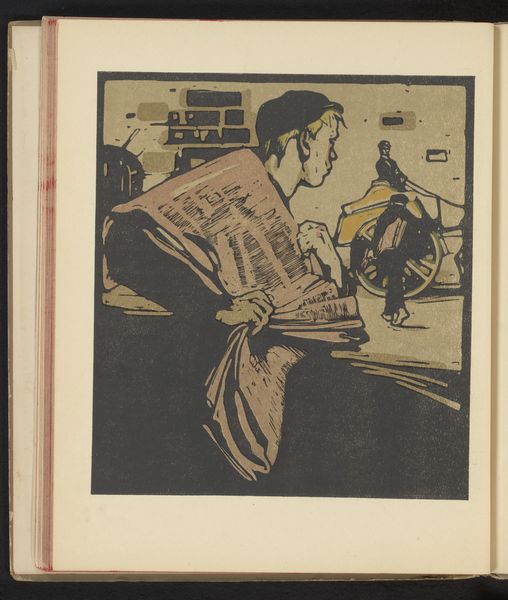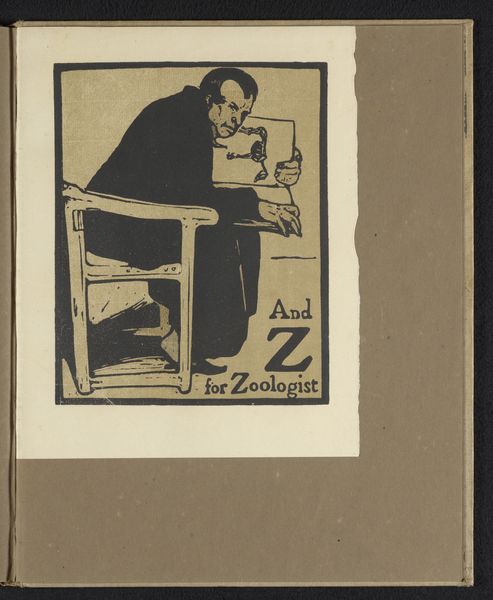
print, woodcut
#
portrait
#
ink painting
# print
#
german-expressionism
#
expressionism
#
woodcut
Dimensions: image: 15 x 9 cm (5 7/8 x 3 9/16 in.) sheet: 19.2 x 12.8 cm (7 9/16 x 5 1/16 in.)
Copyright: National Gallery of Art: CC0 1.0
Editor: This is "Head Waiter in Café" by Ernst Ludwig Kirchner, a woodcut print from 1904. It’s strikingly angular and the color palette is so unique, not naturalistic at all. What strikes you first when you look at the composition? Curator: I immediately perceive the tension inherent in the formal contrasts. Consider the stark juxtaposition of the flattened planes against the illusionistic depth suggested by the receding table. Kirchner masterfully manipulates positive and negative space, creating a visual rhythm that pulsates throughout the composition. Notice the deliberate distortion of form; how does it contribute to the overall affective quality of the print? Editor: I see that now, how the rigid lines give a fragmented feeling to the figure. What's the function of color, beyond just representing things? Curator: Indeed. Color functions symbolically rather than descriptively. The acidic orange backdrop clashes violently with the somber, almost sickly green of the bust. The contrast amplifies the sense of alienation and unease so crucial to German Expressionism. It also adds symbolic meaning through semiotics; can you name any example in the semiotics of this print that give insight on the context in the artwork? Editor: I see. The bust looming over the scene has the feel of some kind of authority... But isn't Expressionism about more than just form? I thought that this particular artistic expression reflects modern angst. Curator: Form is not separate from content but deeply intertwined. By distorting reality, Kirchner lays bare the psychological turmoil of the era, imbuing his work with emotional and intellectual force. Now I can see that. I have a better understanding on form and composition to interpret artworks.
Comments
No comments
Be the first to comment and join the conversation on the ultimate creative platform.
